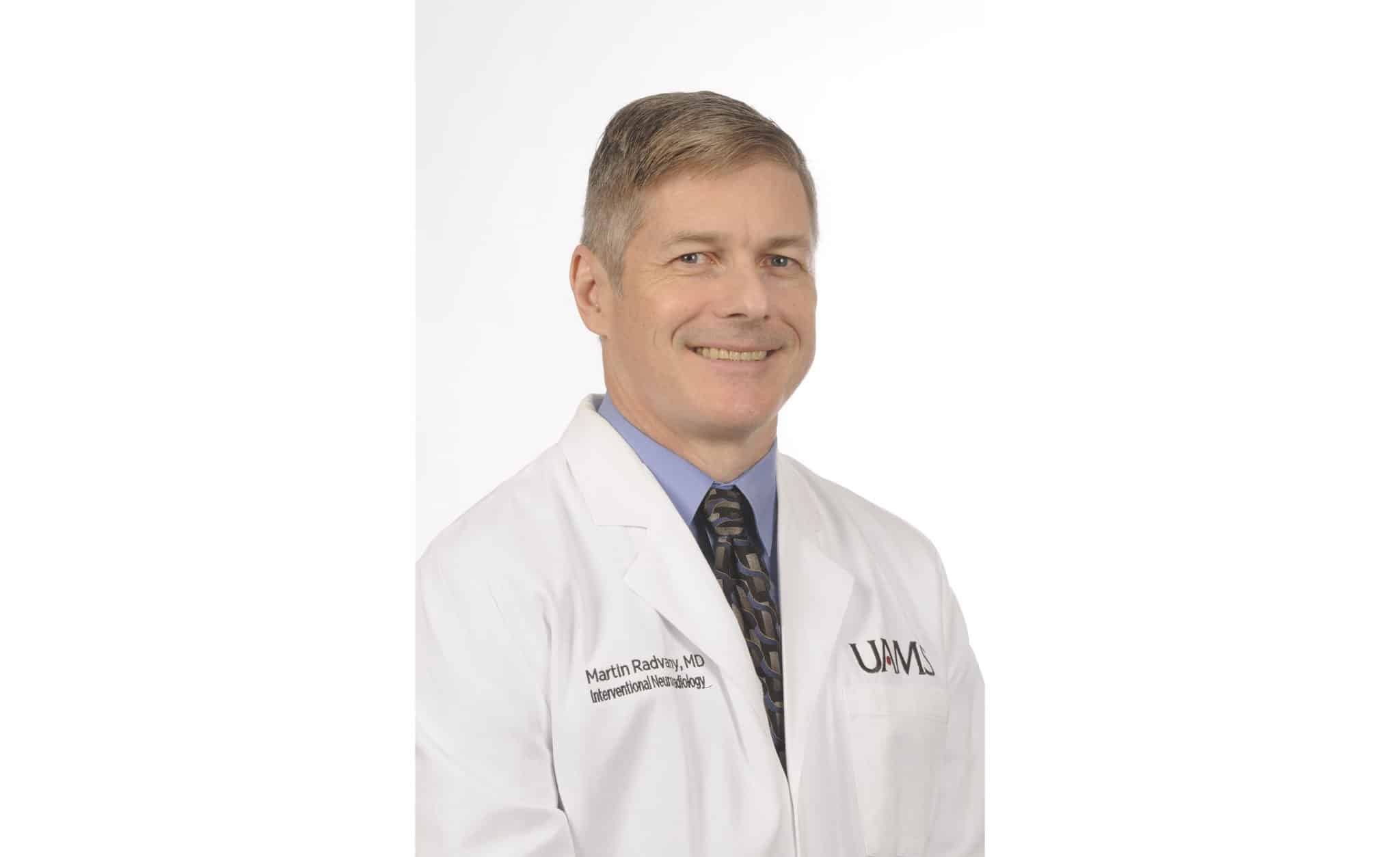Martin Radvany, M.D., Honored as Fellow of American College of Radiology
| Martin Radvany, M.D. — chief of the Division of Interventional Neuroradiology at the University of Arkansas for Medical Sciences (UAMS) — has been elected a fellow of the American College of Radiology, one of the highest honors the professional organization bestows on its members.
Fellowship recognizes exceptional service to the organization and the profession of radiology as a whole. Only 10% of members receive the honor, which is approved by a vote from the college’s Board of Chancellors.
Radvany received the honor May 17 at the college’s Convocation Ceremony, held remotely because of the COVID-19 pandemic.
Radvany, who is also a professor of radiology and neurosurgery in the UAMS College of Medicine, has been involved in education for the majority of his career and has trained more than 70 residents in interventional radiology and 15 fellows in neurointerventional radiology. Radvany has worked extensively in the Society of Interventional Radiology for several decades teaching and coordinating workshops in many areas of interventional radiology and neurointerventional radiology.
Radvany received his medical degree from Northwestern University in Chicago. He completed a residency in diagnostic radiology at Tripler Army Medical Center in Hawaii and a fellowship in interventional radiology at the Johns Hopkins Hospital in Baltimore. After completing his fellowship, he served for nine years at Brooke Army Medical Center in San Antonio, Texas, where he was promoted to lieutenant colonel and served as chief of the Interventional Radiology Service.
Radvany returned to Johns Hopkins in 2007 for a fellowship in interventional neuroradiology and then joined the faculty as an assistant professor of radiology, neurological surgery and neurology. He served as chief of interventional neuroradiology at the Johns Hopkins Bayview Medical Center and director of the Interventional Neuroradiology Fellowship in the Johns Hopkins University School of Medicine. Radvany worked with teams of internationally known specialists developing endovascular techniques and medical devices for the treatment of brain aneurysms, stroke, vascular malformations and pseudotumor cerebri syndrome.
Radvany has contributed chapters to more than 15 textbooks on endovascular treatment of neurovascular disorders and published over 50 articles in medical journals. He is a reviewer for several medical journals and has lectured internationally.
Founded in 1923, the American College of Radiology represents nearly 40,000 radiologists, radiation oncologists, nuclear medicine physicians and medical physicists. The college aims to serve patients and society by empowering members to advance the practice, science and professions of radiological care.
UAMS is the state’s only health sciences university, with colleges of Medicine, Nursing, Pharmacy, Health Professions and Public Health; a graduate school; a hospital; a main campus in Little Rock; a Northwest Arkansas regional campus in Fayetteville; a statewide network of regional campuses; and eight institutes: the Winthrop P. Rockefeller Cancer Institute, Jackson T. Stephens Spine & Neurosciences Institute, Harvey & Bernice Jones Eye Institute, Psychiatric Research Institute, Donald W. Reynolds Institute on Aging, Translational Research Institute, Institute for Digital Health & Innovation and the Institute for Community Health Innovation. UAMS includes UAMS Health, a statewide health system that encompasses all of UAMS’ clinical enterprise. UAMS is the only adult Level 1 trauma center in the state. UAMS has 3,275 students, 890 medical residents and fellows, and five dental residents. It is the state’s largest public employer with more than 12,000 employees, including 1,200 physicians who provide care to patients at UAMS, its regional campuses, Arkansas Children’s, the VA Medical Center and Baptist Health. Visit www.uams.edu or uamshealth.com. Find us on Facebook, X (formerly Twitter), YouTube or Instagram.###
